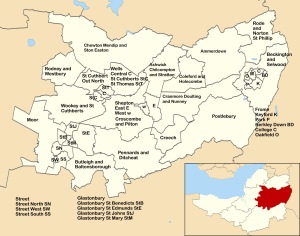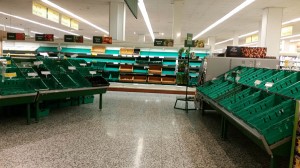From December to March, I didn’t set foot in a large supermarket. Not having a car, I usually get a lift with a friend every couple of weeks to replenish my stores and buy fresh food. On my last freezer trip, I took up this challenge, with no warning nor special preparation, just going into it cold. Thus the project was closer to a genuine prepping event.
The rules allowed me to buy fresh produce or single items within walking distance of my home. I could use farm shops, small grocery stores and local markets, but not larger outlets. Deliveries from the latter were also out.
I learned a great deal from this project, and here are the other highlights…
The Addictive Nature of Supermarkets
This was a genuine surprise. A few weeks into the project, I began concocting excuses for myself. I should keep my stores replenished. I was missing out on bargains. All ways to trick myself into a supermarket trip. It was comparable to the strategies I’d used in the past to avoid giving up smoking!
After about two months, these feelings wore off, replaced by a reluctance to return to my former behaviour. Although I had always maintained that supermarkets were addictive, I’d considered it a bit of a joke. I never expected to realise it was the truth!
Vitamin C
There isn’t any fresh fruit in a British winter. The farm shops and local markets rarely buy in imported produce and, with their low turnover, such goods are frequently of poor quality in the small groceries. Apart from apples, I couldn’t access much fruit apart from my frozen, tinned and dried supplies. All the Resilience Garden had to offer was a dwindling supply of carrots, parsnips and leeks.
I noticed I was drinking more fruit juice than usual, got through my fruit stores faster. The take-away here is that a large bottle of vitamin C tablets is essential in your prepping stores. The sell-by isn’t great, but it’s probably worth throwing an expired pack away and replacing it to keep this crucial item on hand.
Freezer Stores
I always shunned the use of freezers for resilience supplies. Too many people clog theirs up with batch-cooking which they’ll neither use nor throw away. As these shouldn’t be kept for more than three months, they’d be of no use in an emergency either. As with all stores, the key is rotation. If you don’t eat it, don’t keep it.
With few exceptions, I only freeze ingredients – meat, fish, vegetables, fruit. In a sudden defrosting event, these can be cooked and refrozen if the power is restored in time, or preserved in other ways. Ready meals just become a waste disposal problem. My freezer plan held up well, and I made little use of the longer lasting tinned and dried stores (apart from the fruit). I could last another three months just on these, but I’m resisting this new challenge for the time being.
Transport
As I mentioned, I don’t have a car, just support the existence of one I can use. I can bulk buy if I need to. However, if I only needed to do this every three months, I could easily afford a taxi home with my shopping. The rest of the time, I’d be walking or cycling. Even less need to maintain a personal car!
Summary
The main lesson from this three month project was ‘Eat what you’ve got, not what you want.’ It’s unreasonable to expect fresh strawberries in January, to insist on salads in winter. In a very real sense, these demands are destroying the planet!
In addition, I learned:-
- avoiding supermarkets saves money
- supermarket shopping is a real addiction
- vitamin C is an important item in the prepper’s cupboard
- my freezer strategy is sound
- I need more fruit in my stores (and more instant coffee!)
- I could live for a long time on the food within walking distance of my home
If you ran a test of your prepping stores right now, how would it go? Try it and see!
“How much food can you access within walking distance of your home?”
from The Handbook of Practical Resilience, page 3.
You can buy a copy of this book here, and ‘Recipes for Resilience – common sense cooking for the 21st century’ here.























